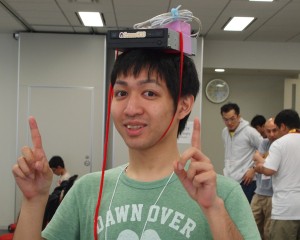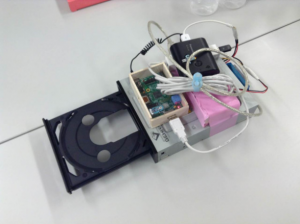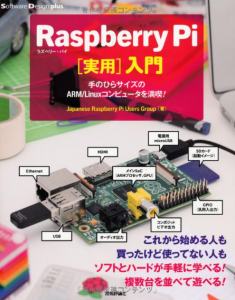|
Sony will be officially releasing their new 3rd generation T3 e-Reader next week in the US, Canada and overseas. The overall build quality mirrors the previous iterations of the hardware and most of the differences are software related. With minor tweaks and updates, how does this e-Reader stack up against the competition? Hardware
The Sony PRS-T3 features a six inch e-ink Pearl display screen with a resolution of 1024×768. This is not quite as fancy as some of the new devices hitting the market in the next few weeks and seems to be using outdated technology from last last. It also is lacking the front-lit display that allows you to read in the dark. Instead, Sony has covers that have a built in reading light and will retail for $60.00 when they are released at the end of October. Sony made a very odd design choice with the new sleep covers and other cover accessories. If you device to remove the cover you will have the battery, SD Card and other ribbons poking you from the back. Sony basically has mandated that you must always have a cover on the device. It does not have the same backing as every single e-reader on the market. Underneath the hood is a 1 GHZ Freescale processor and 512 MB of RAM. Sony says that the built in memory is 2 GB, but when you take it out of the box for the first time, you only have a paltry 1.2 GB of storage space. If you are a voracious reader, you must invest in an SD Card. As e-Readers have processed over the years, most have scrapped physical buttons to go with capacitive touchscreen displays. Tablets also have followed suite and all common functions are accomplished with software. Sony has buckled the trend by sticking with the page turn, home and settings buttons. This allows you to simply hold the device with one hand and are able to turn the pages, quickly and easily. This device as built in WIFI, that will allow you to connect up to the Sony Reader Store and surf the internet. The built in web-browser is actually very solid and has three complete pages of settings and options. You can disable Javascript, popups and even strip away all images. This is useful for blogs that are image heavy and will insure quick loading times. You will have three months of battery life if you read a few books a month. The hardware basically mirrors the Sony PRS-2 and there are really no differences in the overall aesthetics. If you have had a prior model, you know what you are getting yourself into. The main allure of the T3 is the software. Software
The Sony PRS-T3 is running on Google Android, which maintains the same theme as their entire modern line of e-readers. Nook is the only only mainstream brand that has their OS, much to the enjoyment of hackers who like to root their devices. If you like to take notes and make quick annotations the T3 is the right e-reader for you. You can use an official Sony Stylus to augment any type of eBook, whether it is a PDF or EPUB. Any changes you make will be saved to your device, but you cannot export the books with all of your notes. Sony has always had deadly support for handwriting and note taking. The one drawback, is unlike previous models, this does not come with at Stylus. Instead, you must buy one from Sony and they normally cost $20.00. There are a few key software features that make the T3 stand out from the competition. The first is Evernote, which allows you to connect up your account and sync notes, books and text changes directly to your account. The second main element is an Overdrive shortcut, that takes you to the Sony website with a stripped down version of the digital library lending service. You simply just need a library card and your four digit pin code, and you can select your library. Anything you borrow, you can read directly on your Sony e-Reader, and they are the only company that has a longstanding relationship with Overdrive. The one thing that made me dig this e-reader was a very small factor, but is very unique. Most e-Readers if you are connected to WIFI have a timeout. This preservers your battery life, but automatically shutting off the internet. Kobo Readers are notorious for doing this and if you need to connect to a website, it often takes a good three minutes for everything to reinitialize. Sony has a cool option to let you disable the timeout. e-Reading Experience
The PRS-T3 has a dedicated homescreen that lists the four last books you have purchased or open. At the very top is the book you are currently reading and displays the page you are on. The main menu is simply designed and a bit elegant. Kindle e-Readers often have links to books you can buy, directly on your main page, which can be dis concerning to always be prompted to buy something else. You basically buy this e-Reader for EPUB, PDF and FB2 files, it supports little else. Still, you can buy books from other websites and load them directly on it with Adobe Digital Editions. The overall reading experience lacks when you stack up the T3 head to head against the Kobo Aura or even the Kindle Paperwhite. Text seems to be a little dim, also there are plenty of advanced options to adjust There are a very options that you change the darkness of the text and background. None seem to really make a huge difference, might may offset the glare from the reading light. There are nine different font sizes and when you select one, it updates live. This means the text changes in real time and provides the reader with an indication on any changes you make. There is seven different font types, but you would be hard pressed to really know what they do, without trying them out. I mean, when is the last time anyone used “Really No. 2″ or “Frutiger Neue” or even “Univers Next”? I have used over a hundred e-Readers and have never seen such a woeful attempt to not license any official fonts. There are eight different dictionaries that are loaded on the T3 by default, but will really differ depending on what region you bought it from. The Canadian edition has different versions of French, English and Spanish. If you don’t know what a word is, you can long-press on it and select the dictionary you want to use. The T3 does not have an accelerometer or gyroscope. Instead, if you want to get out of the standard portrait mode, you can hit a settings button and visit landscape. This may suit different types of media better, such as newspapers, magazines or graphic novels. The PDF experience allows you to re-flow the text with settings options. You have to really go through a series of trial and error configuring, until you find that sweet spot. You can also pinch and zoom to more quickly find the perfect viewing perspective. When you are in the process of zooming a small notification area appears, that gives you a sense on where you are within the document. It pales in comparison to Kobo’s options that actually lists text and images in in the preview pane, instead the Sony just has white on black. Once you find your ideal prospective you can use the page turn keys to flip a page and maintain your settings. You cannot use touchscreen swiping and gesturing to turn a PDF page, if you are zoomed in. Wrap up
Sony used to have the BEST PDF support in the business for many years, but have quickly become a distant number three. They haven’t been able to solve the refresh issues with constantly turning pages or zooming in. This is mainly because they failed to use e-Ink Regal technology, which drastically reduces “ghosting” and refreshes. You should buy this device if you have a panache for using a stylus and taking notes. The T3 really shines when you are drawing or just drawing arrows and diagrams. I can see this being very useful for people who need to augment technical PDF files or for school. This reader is also perfect who just want to read and don’t need a ton of distractions with games, lights and all the other gobbledegook. If its your first e-Reader, it is a solid investment. If you are a fiendish reader and looking for a hot new item to really use as your main digital book reading device, I would go with something else. Turning it on for the first time and using it for a few hours, just felt like a dated unit. A few days of using it, and I long for the Aura, which is superior in every way. PROS Solid Stylus Support CONS Outdated Hardware Rating: 6.5/10
Sony PRS-T3 Reader Review is a post from: E-Reader News |
A Semi-automated Technology Roundup Provided by Linebaugh Public Library IT Staff | techblog.linebaugh.org
Thursday, September 12, 2013
Sony PRS-T3 Reader Review
Monetate Ecommerce Quarterly Report Reveals Tablet And Social Sites Contributing More to e-commerce
|
The latest Monetate Ecommerce report has brought to light some very interesting findings, especially that of tablet devices beating smartphones so far as the total website traffic from mobile devices is concerned. For those who prefer hardcore figures, total e-commerce traffic from tablets now constitute 12.44 percent of all e-commerce traffic, with smartphones lagging close behind at 9.69 percent. What this proves is that tablets have emerged as the preferred device for surfing the net or for online shopping. Of course, the bigger display is useful here compared to smartphones, which typically max out at five-inch displays. Users naturally will be more comfortable doing their shopping via a tablet than a smartphone. Not surprisingly, it is the iPad that has emerged as the dominant tablet based on website traffic, while iPhone is leading the smartphone segment. What the report also reveals is the decline in influence that email-based marketing efforts have registered on e-commerce. Instead, it is the social networking sites that seem to have emerged as the best destination for online marketing. Facebook has come out on top, contributing 60 percent of the referrals to online retailing sites. Pinterest and Twitter are the other significant players here, contributing about 20 percent and 10 percent of referrals to online shopping sites. All the above mentioned information is relevant for the second quarter of 2013.
Monetate Ecommerce Quarterly Report Reveals Tablet And Social Sites Contributing More to e-commerce is a post from: E-Reader News |
Amazon Controls 79% of the eBook Market in the UK
|
A new survey was recently released by Ofcom, undertaken by Kantar Media and made possible by financial support from the UK Intellectual Property Office. It is very apparent that the vast majority of digital readers are doing business with Amazon and to a lesser extent all the other digital bookstores. 79% of the people polled from March-May 2013 have used Amazon's Kindle platform to download, access or share e-books in the last three months. Amazon is the bookstore of choice in the UK by a long shot and all of the others have single digit presence in one of the worlds top publishing markets. Apple's iBookstore was the second most-used e-book platform, with 9% of respondents saying that was their preferred choice. Google's search engine was the third most popular platform, used by 8% of people.Google Play has a 6% share, while 5% respondents accessed or downloaded e-books from email, 5% from Kobo and 4% through Facebook. According to the survey Waterstones has a 3% share of the UK e-book market, along with uTorrent, a platform for Microsoft Windows and Android. What is very interesting about this survey is that Barnes and Noble has not even cracked the top 10. Considering how much money they are investing in advertising and slashing the hardware prices, customers are not responding. During the survey period customers spent close to £525m, equating to £9.79 for every person in the UK, or £26.19 for people actively buying books. This is a fair amount of sales, but customers are voicing their disdain for higher than average eBook prices. A large majority of 81% indicated they would be prepared to pay at an entry price of £2 for an eBook. The average price respondents were willing to pay for an e-books was £3.74. The final aspect of the survey discussed the proclivities of pirating digital content. Only 1% of the UK survey respondents claimed to engage in the shady aspects of pirating eBooks via file sharing websites. The most interesting detail is that the book pirates actually spend more money on books then your average customers. Book pirates spent around £27.46—on average on digital and physical books than those who accessed all their e-books legally, who claimed to spent £23.77 on average. To get a better sense on what specific books are being pirated, check out our Good e-Reader Bestseller List! We track all of the major file sharing websites to provide publishers and readers with valuable metrics on what books and genres are being pirated the most. Amazon Controls 79% of the eBook Market in the UK is a post from: E-Reader News |
Akkie, and the 101 things you can do with a CD-ROM drive’s eject function
| I met Akira Ouchi – or Akkie, as he prefers to be known (his site’s in Japanese, but you can use an auto-translation service) at the Big Raspberry Jam in Tokyo back in May. Although we didn’t have much, if any, language in common (besides Python), we became friends instantly. Largely because he had strapped a Raspberry Pi and a CD-ROM drive to his head, and kept issuing the whole system an eject command while shaking my hand warmly. I noticed a different approach to hobbyist electronics in Japan. This is a broad generalisation, but it does hold some water: here in the west, we have a tendency to spread ourselves very broadly in our approach to projects (a carputer one week, a garden sprinkler the next). We noticed that our Japanese friends tend to explore a single idea very, very deeply and thoroughly: so rather than making a good-enough project and moving on to another, people like Akkie will take a single, simple idea, and refine and push it to a degree that…it’s either madness or genius. I’m still not sure which. So. On the day, Akkie went on to give a presentation about what he was doing with the CD drive and the Pi. As well as making a fine fashion accessory, he hooked the kit up to the Twitter API, so whenever someone favourited one of his tweets, the eject mechanism would trigger. Call it an alternative to an LED notifier. (Akkie is @Akkiesoft on Twitter, and you should follow him even if you don’t speak Japanese, because as well as being able to trigger his CD-ROM drive, you will discover that the man is a savant of 140-character ASCII art.) Akkie then gave me a little sticker he’d had made, with a CD-ROM drive on it. Later on, Akkie attached a pencil to the CD-ROM drive and demonstrated that it could be used as a remote-control for his antiquated air conditioning system, which does not have its own remote. He triggers the Pi and CD-ROM drive with a web app and this time, instead of acting like an LED notifier, it works like a solenoid, and presses the on button on the air conditioner. And then he showed it working as a hamster feeder. On New Year’s Eve, it rang a bell to welcome in the New Year. Since then, Akkie has refined his hat. (The original version was not well-adapted to a culture where you have to do a lot of bowing.) He has also become a published author: he contributed a chapter (which I can’t read, but I bet it’s great) to the Japanese Raspberry Pi User’s Guide. See if you can guess what it’s about. I have a picture of Akkie wearing a maid’s costume at the party we went to after the Big Jam (he had borrowed it from an NEC engineer), but he probably wouldn’t thank me for showing it here. So instead, here’s a picture I took of a picture Yuriko-san took of Eben, to whom Akkie donated his headgear for the evening. I post this because I want to impress on you that sometimes simple ideas can have more application and potential than we imagine – we tend to write about huge, complicated systems here, but there’s beauty in simplicity. And I post it because I really miss our Japanese friends; the Raspberry Pi community there is huge, imaginative and more friendly and generous than any other group we’ve met. We’re hoping to return in 2014. Until then, check out Akkie’s eject gubbins on GitHub, and let us know if you can think of any more applications for his helmet. (☝ ՞ਊ ՞)☝ウイーン, Akkie! (See. I’ve been practising.)
|
5 Study Skills for Back to School
| Check out these helpful study tips for back to school success! |
URL: http://blog.gcflearnfree.org/2013/09/12/study-skills-for-back-to-school/
Trade-In Your Old Kindle for a New One
| Amazon offers a trade-in program on their website for all kinds of items, including DVDs, textbooks, video games, music, and electronics. The latter category includes all kinds of gadgets, notably older Kindle models. Some of the older Kindles aren’t valued very high. Amazon will only give up to $26.26 for the basic graphite Kindle from […] |
URL: http://feeds.the-ebook-reader.com/~r/feedburner/cmWU/~3/Lfjfy-5dPRI/
Pew Internet Study Details Number of US Households without Internet Access
 Graphic courtesy of news.softpedia.com The Pew Internet and American Life Project, under the formation of the Pew Research Center, compiles data on various aspects of technology adoption in the US. Recent studies have examined tablet ownership, digital adoption among teenagers, and a host of other ways that computers and technology have become an incorporated part of daily life in America. Now, Pew Internet released the findings of a study aimed at discovering how many US adults had access to the internet, and if so, how. While only 70% of adults have home broadband access, an additional 3% still have dial-up internet. Also, another 10% of adult who did not have broadband or dial-up access did own a smartphone and were able to access the internet in that way. According to the organization, “The report also found that demographic groups with the highest rates of home broadband adoption continue to be college graduates, adults under age 50, and adults living in households earning at least $50,000, as well as whites and adults living in urban or suburban areas.” This is only a fractional jump from a Census Bureau study in 2011 that found that, while 98% of Americans live within areas where broadband access is available, only 69% of households actually used it. It’s interesting that Pew Internet found a correlation between smartphone use and internet access, one that actually goes against what logic would state. Rather than bridging the long-understood digital divide, smartphones in households that did not have broadband access actually widened the gap, according to Pew’s data charts that can be found by clicking HERE.
Pew Internet Study Details Number of US Households without Internet Access is a post from: E-Reader News |
Tough Topics for Teens: Author Spotlight – Jennifer Brown
|
Jennifer Brown is not afraid to tackle hot button issues for young adults. With an interesting take on difficult matters, her stories have morals and a message about topical subjects without sounding too "preachy".
78% of teens have a cell phone, according to a 2013 Pew Research Center report. Between 4%-15% of teenagers have admitted to sending or receiving sexually suggestive images on their phone (also known as 'sexting'). This number has most likely increased since the Pew study was conducted in 2009, with the growth in cell phone use and apps like Snapchat. Brown's most recent book, "Thousand Words" focuses on how sexting impacts an everyday high school student.
After drinking at a party, good student and athlete Ashleigh is convinced by her friends to send a suggestive picture to her boyfriend. After they break up, in an act of revenge, he sends the picture to his friends and it quickly circulates around their school and beyond. The story highlights not only the personal trauma this causes Ashleigh, her parents and ex-boyfriend but also the legal repercussions. A serious read that might make teens think twice before taking 'sexting' lightly.
Brown has also written about physical and emotional abuse in young relationships ("Bitter End") and the tragedy of school shootings ("Hate List"). "Hate List" takes the perspective of Valerie, the girlfriend of the school shooter. While she is injured during his violent act, she also feels responsible as they together created a 'hate list' of people they didn't like at their school. She struggles with her own culpability, while also dealing with life after her boyfriend's suicide and murder of their classmates.
These are heavy issues but Jennifer Brown writes about them in a way that will appeal to teens and make you want to keep reading. If you're looking for more "issue" YA eBooks, make sure to check out the first Tough Topics for Teens blog from earlier this year.
Find these titles and many more in OverDrive Marketplace!
Melissa Marin is a Marketing Specialist at OverDrive.
|
URL: http://feedproxy.google.com/~r/OverdrivesDigitalLibraryBlog/~3/DFOEH0vmoGk/












